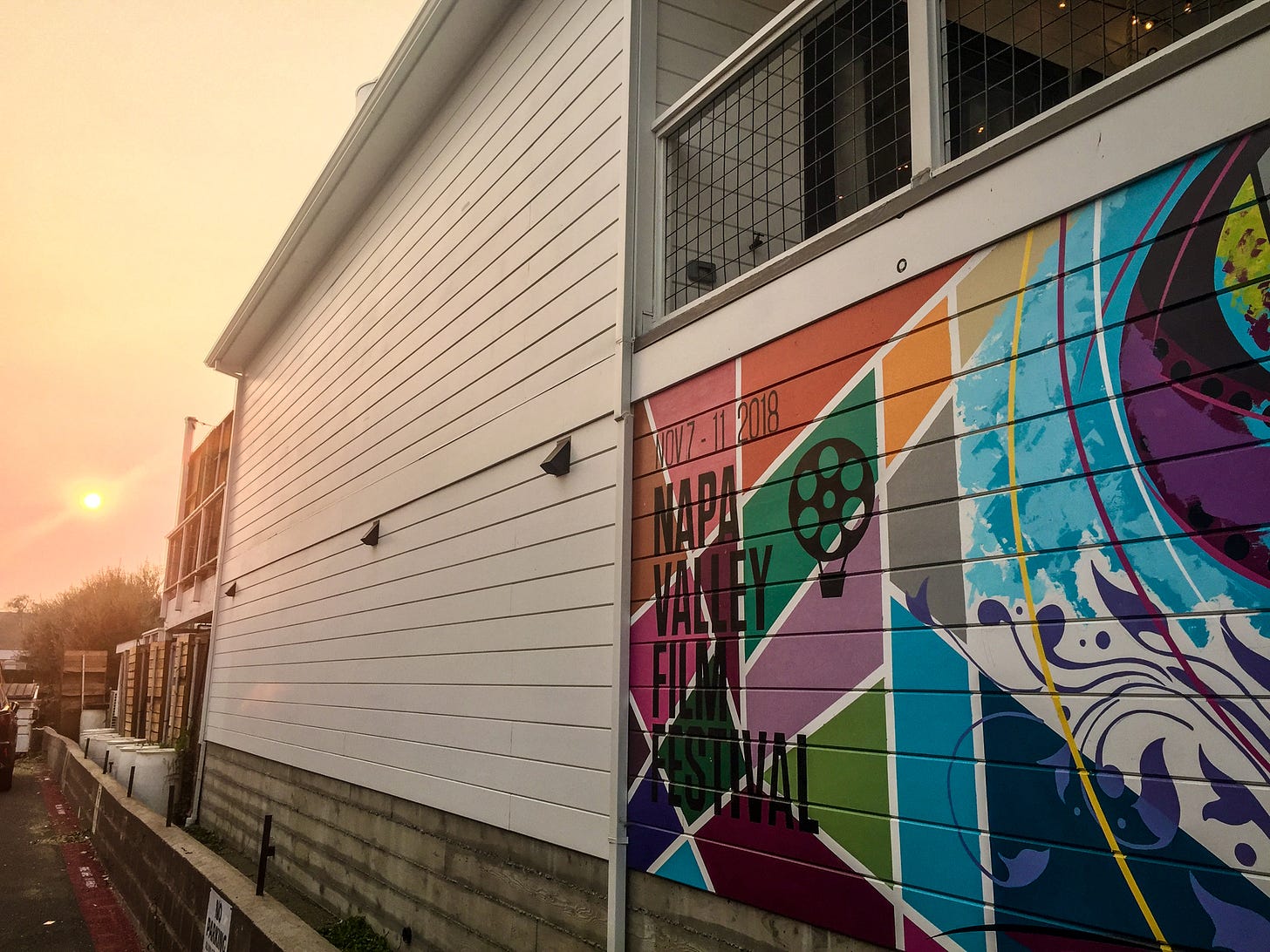
It is November 10th, 2018, and I am sitting at a bus stop outside of the Lincoln Theatre in Yountville, Napa Valley, California. I am dressed for a film festival: shiny jewelry, chunky heels, lipstick. My “artist” badge dangles around my neck. The air is smoky, the sun orange-red. I’m waiting for a bus that will take me back to the town of Napa, to the filmmaker lounge where I will drink copious amounts of free booze and, basically, party all night.
We all know the analogy about the frog in boiling water, right?
The smoke rolled in two days ago. Driving up the valley to a networking event, I peer out the window at the rows and rows of grapevines, oak trees drooping over the side of the road. It’s beautiful when you can see the hills, my friend Samara tells me.
We stop at the edge of a vineyard to take photos. The smoke casts a beautiful filter over us, the sun’s glare diffused tangerine-pink. I adjust my outfit, noticing white flecks on my shirt. I began to curse my dry scalp until I realize … it’s ash.
Back at the bus stop, I consider the callousness of our photo shoot. The world is burning and we’re mugging for Instagram. But at what point do we stop living our lives the same way?
At the stop, a bus pulls up and a visibly nervous woman exits out the front door. I go to board, but the bus driver out comes behind her, shaking his head at me.
We’ll have to wait here for a while, he says. There is a man with a gun on the grounds and about six cop cars at the entrance.
Oh.
But they seem to have things under control.
I nod at him and sit back down on the bench. This is the last festival on my film’s year-long tour. It is meant to be a celebration, and it is. But there is a heaviness here too. A dichotomy.
When I arrived three days ago to clear and sunny weather, I was so excited to explore this part of the world for the first time. The Napa Valley Film Festival wanted to play my film?! What an honour. What a privilege.
Outside of the theatre on opening night, the first person I met was Chris Paine, the documentarian behind Who Killed the Electric Car? He’s at this festival with a new film on Artificial Intelligence. I tell him that I generally avoid learning about AI because it terrifies me. He confirms that my fears are valid. After taking pictures on the red carpet, we head into the old Art Deco theatre and later at the party, wine flows.
Sitting at the stop, with the apocalypse sun staring down at us, the nervous woman hums quietly next to me. I just saw Paine’s film — Do You Trust this Computer? — and I’m in shock. When the bus driver mentioned the shooter, I barely blinked, numbed by the fear of our impending robot overlords. With the hazy, dystopic sun overhead, there is nothing left in me to feel.
I turn to the nervous woman and ask her how much the bus costs. She shows me the money in her hand and upon seeing the five dollar bill in mine, through imperfect English, communicates that they won’t make change. I shrug. Five dollars is still way less than the cost of an Uber .
The bus driver opens the door and signals for us to get on. I gesture to the woman to go first. As I wait my turn, I consider the stillness around us, this soft-filtered world. I have a hard time picturing cop cars or the disturbed man they were after. The air is quieter when it is made up of smoke. Heavier. Dreamlike. Numb.
Ahead of me, I notice the woman digging for change in her wallet. She’s paying my fare.
Oh my, I stutter as I watch her find the last coin. You didn’t— That is so… Thank you. Thank you.
She nods, gives me a small smile, and disappears to the back of the bus.
I walk down the aisle and take my seat across from the exit doors. As I open my notebook to scribble my thoughts down, I begin to cry. The first thing I write is—
“We need to hurry up and evolve.”





